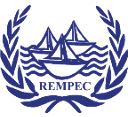Offshore Monitoring
Specific Objective 9. of the Mediterranean Offshore Action Plan (Decision IG.22/3) calls for the establishment of a regional Offshore Monitoring Programme under the framework of Integrated Monitoring and Assessment Programme (IMAP) of the Barcelona Convention. The expected actions/outputs and key milestones include:
- a) A regional monitoring programme for offshore activities building through a set of indicators to complement IMAP addressing offshore activities is developed and adopted
- b) National offshore monitoring programs established, and reporting as part of IMAP implementation
Article 19 Monitoring of the Offshore Protocol builds on the relevant work undertaken in the Monitoring Correspondence Groups on the Ecosystem Approach (EcAp) process in line with Decision 21/3. IMAP monitoring data will be used to compliment the more targeted and site-specific monitoring of offshore installations and activities, and to provide information on whether the impact of offshore activities affects the wider marine and coastal environment. It will also contribute towards the development of the Mediterranean Offshore Reporting and Monitoring System, i.e. regional data bank on offshore activities through the Barcelona Convention Reporting System (BCRS) or other systems defined by the Contracting Parties, with the support of Info/RAC. One component of the regional system will allow for the regular reporting of data on discharges and emissions from offshore oil and gas installations, which will be used for the production, dissemination and publication of a regional report on Discharges, Spills and Emissions on a biennial basis.
IMAP Quality Indicators
A set of 19 IMAP quality indicators relevant to the Offshore Monitoring Programme was presented at 1st Meeting of the Barcelona Convention Offshore Oil and Gas Group (OFOG) Sub-Group on Environmental Impact in 2017, together with methodological guidance for monitoring (UNEP(DEPI)/MED WG.434/4), minimum requirements for the establishment of a National Offshore Monitoring Inspection Programme (UNEP(DEPI)/MED WG.434/5) and related draft guidance fact sheets (UNEP(DEPI)/MED WG.434/6). This list was later consolidated to 8 IMAP quality indictors directly relevant to the potential impact and effects of oil and gas operations (REMPEC/WG.45/INF/16). These are:
- Common Indicator 1: Habitat distributional range, to also consider habitat extent as a relevant attribute (EO1);
- Common Indicator 2: Condition of the habitat’s typical species and communities(EO1);
- Common Indicator 15: Location and extent of the habitats impacted directly by hydrographic alterations (EO7);
- Common Indicator 17: Concentration of key harmful contaminants measured in the relevant matrix (EO9, related to biota, sediment, seawater);
- Common Indicator 18: Level of pollution effects of key contaminants where a cause and effect relationship has been established (EO9);
- Common Indicator 19: Occurrence, origin (where possible), and extent of acute pollution events(e.g. slicks from oil, oil products and hazardous substances) and their impact on biota affected by this pollution (EO9);
- Candidate Indicator 26: Proportion of days and geographical distribution where loud, low, and mid-frequency impulsive sounds exceed levels that are likely to entail significant impact on marine animals (EO11);
- Candidate Indicator 27: Levels of continuous low frequency sounds with the use of models as appropriate (EO11).
Common Indicators 1, 2, 15, 17 and 18 (marked in bold) are the key monitoring indicators for the oil and gas industry, and it is proposed that the main monitoring effort will focus on these five indicators.

